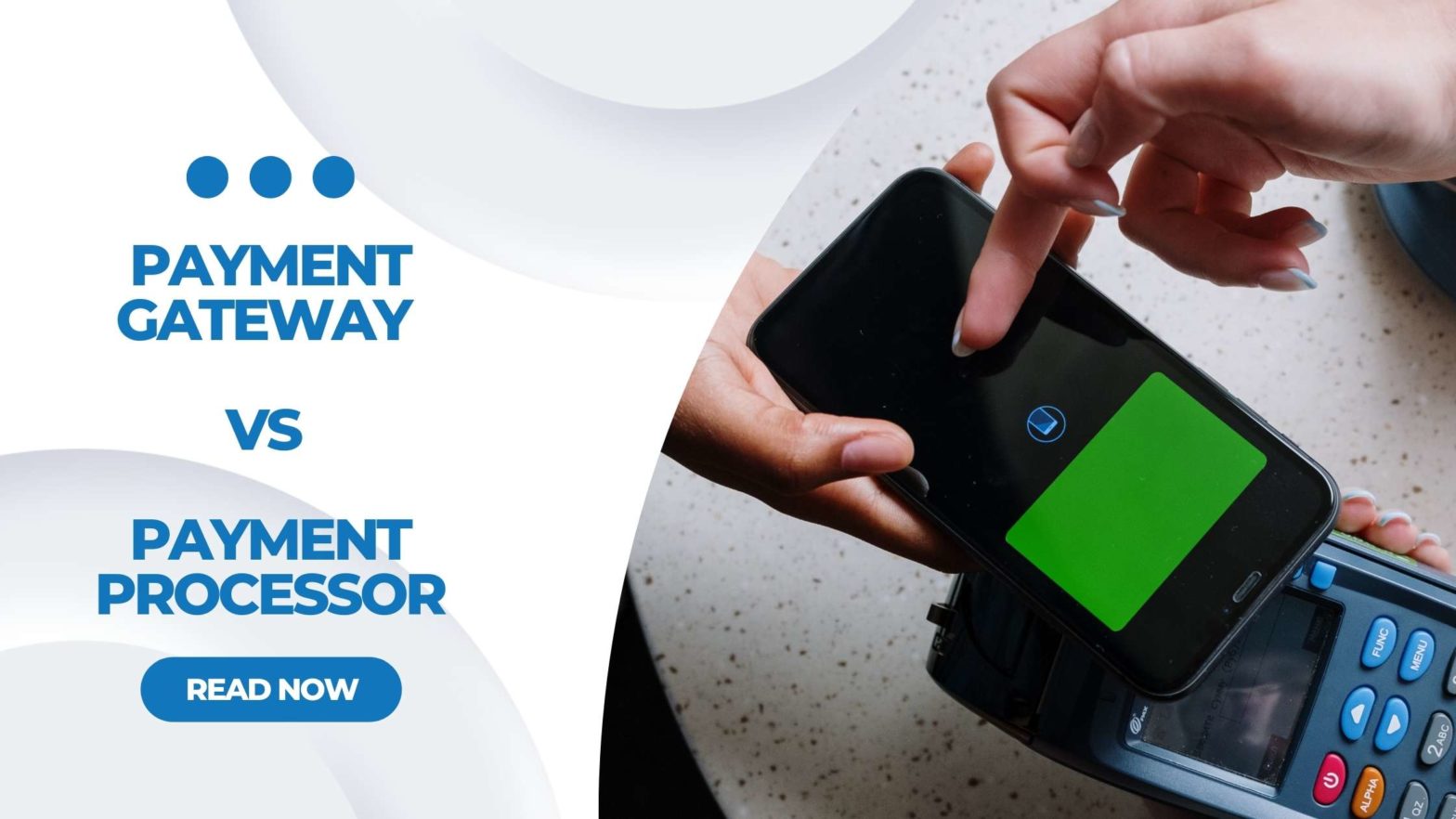
Payment Gateway vs Payment Processor: What Is the Difference?
The number of people buying things online is increasing. Companies have begun to adapt to a more digital style of selling in the aftermath of the pandemic, and have begun to look for ways to enable digital payment methods in-store. In fact, 71 percent of merchants say that their annual online and mobile sales have improved, according to a survey conducted by American Express Digital Payments. How does one manage this transformation as a company?
You must first have the proper procedures and processes in place before you can sell online. Finding and sourcing a payment provider, on the other hand, might be difficult, especially if you are new to the industry. You may have found yourself asking issues like these as the world continues to become a digital marketplace, and you struggle to move your firm into the future.
What is the difference between a merchant account and a business account? What exactly is a payment processor, and how does it differ from a payment gateway? What choices do I have for giving alternative payment methods to my customers? Is it going to cost me money?
These are all frequent payment-related inquiries, each with a detailed response. In this article, we’ll look at one of the most significant aspects of setting up online payments: the difference between payment gateways and payment processors.
Table of Contents
What is the purpose of an online payment gateway?
Any business that accepts electronic payments online, regardless of scale, needs a payment gateway to make the process easier. Payment gateways are the “online” counterparts to conventional credit and debit card readers. If you’re used to in-store payment systems, think of payment gateways as an online version of a point of sale (POS) terminal.
Online payment gateways enable card-not-present (CNP) transactions, whereas POS terminals are primarily geared for in-person/in-store transactions. These are online transactions in which the buyer and vendor never meet in person. To continue the payment lifecycle, a payment gateway sends data from the point of entry – whether it is a POS terminal, website, or mobile device – to the payment processor.
To summarize, payment gateways serve as intermediaries. They process information entered during the checkout process and manage the authorization and fulfilment of payments made to online shops. However, it doesn’t end there. They are also used in brick-and-mortar enterprises, as stated previously.
What is the purpose of a payment processor?

We’ll move on to payment processors now that we’ve learned about payment gateways. You’ll need both to run a profitable business and accept payments.
Payment processors operate as a link between your company and the financial institutions that participate in a merchant’s business transaction. When your customer swipes their card, the processor handles everything, including encrypting their data, transferring it to their bank for confirmation, and finally to your bank.
Payment Processor vs Payment Gateway: What are the main differences?
- A payment gateway is a product or service that allows you to approve or reject business transactions between your website and your customers. A payment processor is a financial institution that handles online transactions and ensures that you get your money from the consumer.
- Payment gateways can be incorporated into your accounting software or online store, allowing you to process credit cards straight from within your software. The Payment Processor will open a merchant account for your company, allowing you to accept credit cards.
- Using a payment gateway to take payments online is a simple process. Using a Payment Processor guarantees that credit card transactions are properly funded. The payment processor facilitates the transfer of funds from the customer's bank account to the merchants.
How does a Payment Gateway work?
The stages that describe how a Payment Gateway operates are as follows :
- The Payment Gateway sends a customer's encrypted sensitive data to the issuing bank from the customer's computer/device.
- The Payment Gateway decodes the encrypted data and presents it to the issuing bank in a readable manner once it arrives at the bank.
- The customer's information is then authenticated or declined by the issuing bank.
- After the issuing bank has confirmed the authenticity of the customer's request, the Payment Gateway sends the online transaction details to the Payment Processor, that completes the business transaction using SSL encryption.

How does a Payment Processor work?
A payment processor’s task is to deliver confidential customer information in the following format :
- The payment gateway delivers the payment processor encrypted consumer information.
- The customer's information is sent to the merchant account bank via the payment processor.
- To validate the cardholder's identification and the online transaction's validity, the merchant account bank makes a request to the customer's card-issuing bank.
- The payment processor receives a refusal or approval notification from the customer's card issuing bank, which is then forwarded to the payment gateway.
- The customer is notified whether or not the transaction has been approved by the payment gateway.
- If the online transaction is approved, the customer proceeds to the checkout process to complete it.
- Following the completion of the business transaction, the processor transmits information to the card-issuing bank in order for funds to be transferred to the merchant account.
How do they work together?
Payment gateways gather and send credit card information to the payment processor. They inform you and your consumer about payment approvals or denials. To break it down even further, consider the following :
Payment processors function behind the scenes, securely routing data to various parties from the start of the transaction until the money is settled in your bank account.
The transaction is facilitated by the payment processor. A payment gateway is a mechanism that allows a firm and its customers to communicate the approval or rejection of business transactions.
A gateway’s most typical purpose is to take payments for goods and services offered online; but, in today’s payment landscape, gateway technology has remarkably extended to create a seamless buying experience across all sales channels and devices. To handle online payments, an e-commerce business must choose both payment services (payment gateway and payment processor).
Most crucially, the payment processor does not interact directly with an authenticator; this is handled through the Payment Gateway. As a result, selecting the correct payment gateway is critical for safeguarding your customers’ sensitive data.
You’ll need both a payment gateway and a payment processor to process online transactions for your business. The gateway is where the transaction begins and ends. The customer will enter their credit card details and will be notified whether the transaction is approved or denied.
The payment processor transfers data from the customer’s bank to the merchant’s bank. Every online transaction necessitates both so it is inconceivable to have one without the other.
How to select a suitable Payment Gateway and Payment Processor?
Payment gateway technology has evolved to keep up with the evolving payments landscape, despite the fact that they were originally designed for traditional eCommerce business transactions.
Payment processing can also be managed over a much wider number of channels and devices using modern gateways. This allows businesses and customers to have a more seamless omnichannel experience.
Different companies can technically manage your merchant account, payment gateway, and payment processing. However, when problems or disagreements develop, this might cause problems. Who is to blame if your online store abruptly ceases to accept payment cards?
You can avoid interoperability difficulties by getting all three from the same vendor such that there is only one vendor you need to contact if a problem arises.
Like this article?
More To Explore

What Factors Should Organizations Consider Before Outsourcing Their Internal Audit Functions?
+91 1141182211 Outsourcing has become a strategic choice for many organizations looking to streamline operations, reduce costs, and enhance efficiency.

Outsourcing Internal Audit: Evaluating the Upsides and Downsides for Your Organization
+91 1141182211 In today’s dynamic business environment, companies face increasing pressure to enhance efficiency, manage risks effectively, and ensure compliance

A Background Verification Guide: Frequently Asked Questions and Their Answers
+91 1141182211 Background verification (BGV) is a crucial process used by employers to ensure they are hiring candidates with accurate

